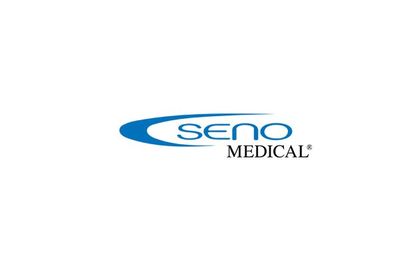

- Home
- Companies
- Seno Medical Instruments, Inc.
- News
- Seno Medical: Making a Difference for ...
Seno Medical: Making a Difference for Breast Cancer in San Antonio
Making It Personal
Earlier this fall, Seno Medical recognized that several of its employees have been touched by breast cancer, but others have not. In an effort to raise awareness of what a patient goes through when undergoing a breast exam and having a suspicious mass identified, Seno launched an employee initiative, termed “Making It Personal,” designed to match employees who want to learn more about the patient journey, with breast cancer survivors and others who are at risk of developing the disease. Employees spent time getting to know patients, their first-hand experience and the many exams they underwent, including painful biopsy procedures, to assess whether the suspicious mass was benign or malignant.
Says Making It Personal participant and Seno Finance Director, Robin Bale, “There’s a lot of learning opportunity here for me. As a man, while I understand the struggle and recognize breast cancer has been a challenging event in a patient’s life, I’ve never walked a mile in her shoes and I don’t know many that have. This program opened my eyes and helped me better understand how important it is – what we do here at Seno Medical.”
The Making It Personal program at Seno was initially a pilot project but is being rolled out across the company to help all employees keep the patient at the center of every activity and at every level in the company.
Raising Awareness
Seno Medical initiated a building-wide Breast Cancer Awareness Day at the Callaghan Tower in the medical center district of San Antonio. Seno employees were encouraged to wear pink, staff a booth in the building lobby to hand out information packets about the importance of breast cancer screening, knowing your breast density and monthly self-exams, and to fundraise for the Komen Foundation. Between donations from Seno employees and tenants throughout the building, hundreds of dollars were donated to Komen San Antonio.
Clinical Efficacy
Clinical study results have been shared at several medical conferences by breast imagers/investigators involved with Seno Medical’s opto-acoustic/ultrasound (OA/US) fused technology. One of the company’s most important international conferences is located locally in San Antonio. At the upcoming annual breast conference – San Antonio Breast Cancer Symposium, running December 4-8 – Seno’s Medical Director, Dr. Gisela Menezes, will present how the company’s OA/US may play a role in noninvasively offering breast cancer prognostic information at the molecular level.
The SA BioMed Community
Ann Stevens, president of BioMed SA, a nonprofit organization whose mission is to organize and promote San Antonio’s healthcare and bioscience assets to accelerate growth, points to cancer research and technology innovation as key strengths of the city’ biomedical sector. “I’ve followed the story of Seno Medical from its earliest days and see it as a specific example of a San Antonio company developing a promising new cancer technology,” she said.
Stevens noted that San Antonio’s biomedical sector has a rich history in cancer research, development and commercialization. “Our city is the permanent home of the world’s largest breast cancer meeting, the San Antonio Breast Cancer Symposium. Now in its 41st year, the symposium attracts thousands of international thought leaders here every December and is known for presenting the latest breast cancer data from around the world. Seno Medical is carrying on this tradition while breaking new ground with its novel approach to cancer diagnosis.”
About Breast Cancer
Breast cancer is the most common malignancy among women worldwide and the second leading cause of cancer-related deaths in females, and it is estimated that 266,120 new cases of invasive breast cancer will be diagnosed in women in 2018. Survival rates have increased steadily over recent decades as earlier detection enables treatment at earlier stages when treatment is more effective and less costly. However, many organizations differ on timing (annually, bi-annually) and ages for screening (to begin at age 40 or 50 years, screening after age 74 years), with varying opinions on how to best balance breast cancer screening costs with rates of detection, rates of false-positives or over diagnoses, and reduction in mortality.
